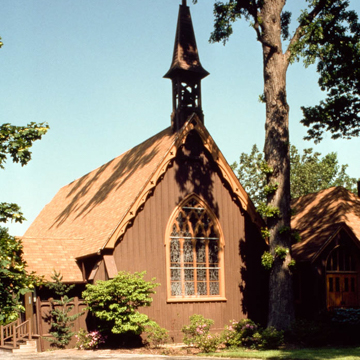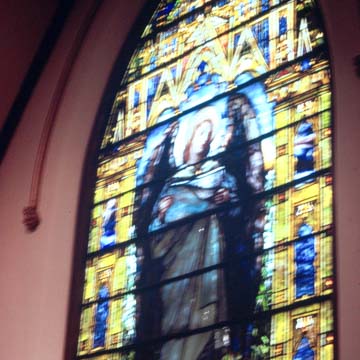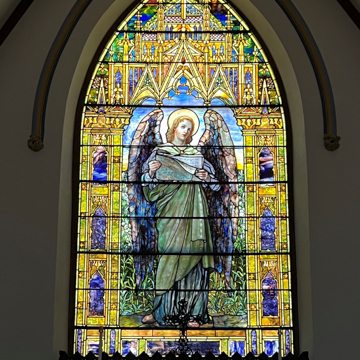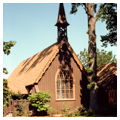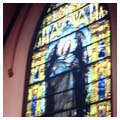St. James Chapel is an exquisite example of the important early Gothic rural technique of board-and-batten advocated by Andrew Jackson Downing. Elizabeth (Lisette) Denison Forth, a former slave and longtime household servant of the John Biddle family, willed her life savings of about $3,000 to build a chapel. With additional contributions from sons William and James Biddle, this chapel was erected to the plans of the Biddles' friend Gordon Lloyd. The steeply gabled little building has scalloped bargeboards pierced with quatrefoils, pointed-arched windows with tracery, a gable entrance vestibule, and a wooden bell-cote. Buttresses support its exterior walls. The interior is best seen in the afternoon, when the sun lights the Angel of Praise stained glass window, which was manufactured by Tiffany and installed in 1898 in the west wall in memory of Susan Dayton Ogden Biddle. The chapel is one of Lloyd's finest works and is comparable to the works of Richard Upjohn. This is a supreme example of a small Ecclesiological church.
You are here
St. James Episcopal Chapel
If SAH Archipedia has been useful to you, please consider supporting it.
SAH Archipedia tells the story of the United States through its buildings, landscapes, and cities. This freely available resource empowers the public with authoritative knowledge that deepens their understanding and appreciation of the built environment. But the Society of Architectural Historians, which created SAH Archipedia with University of Virginia Press, needs your support to maintain the high-caliber research, writing, photography, cartography, editing, design, and programming that make SAH Archipedia a trusted online resource available to all who value the history of place, heritage tourism, and learning.















